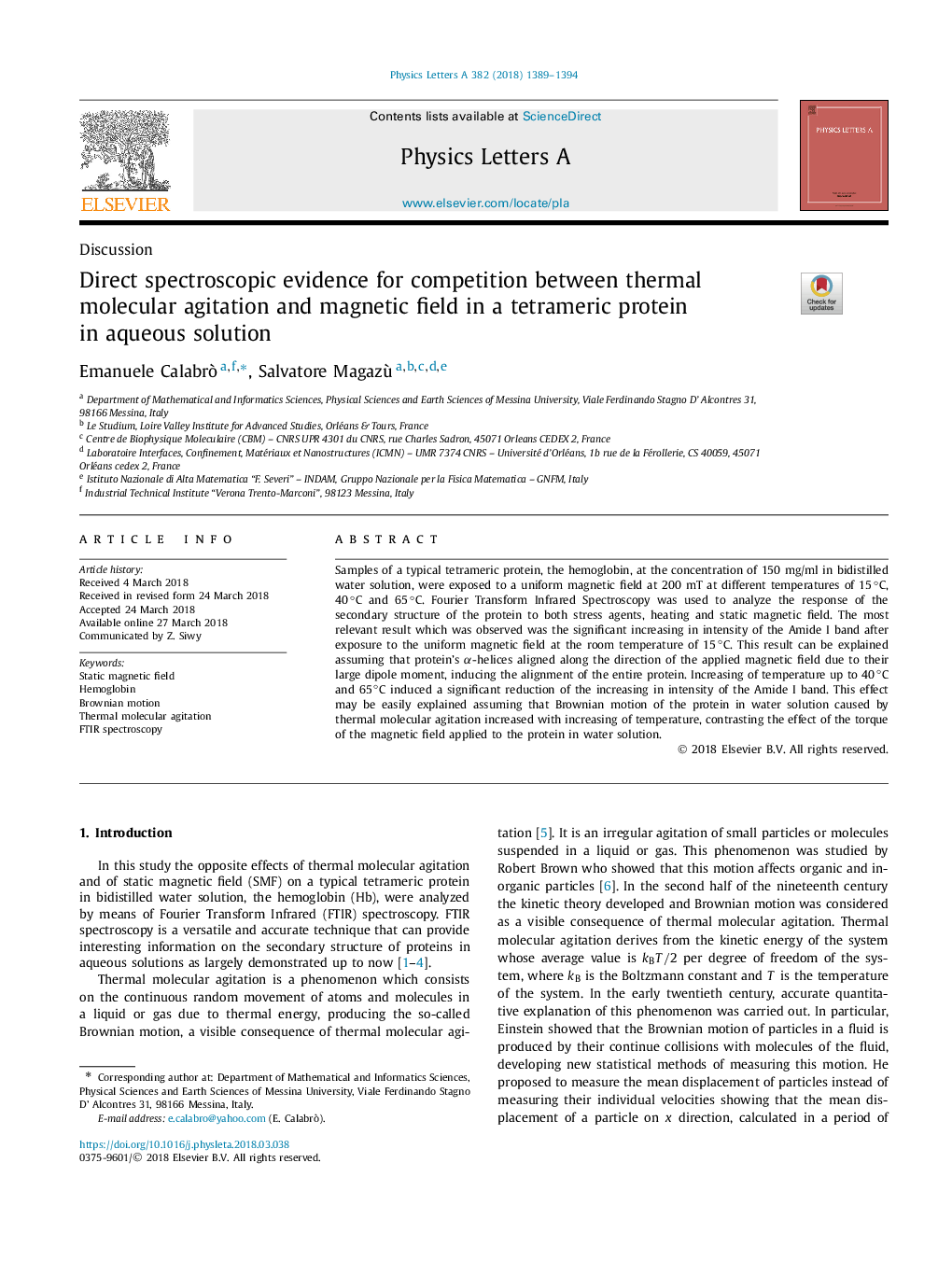| Article ID | Journal | Published Year | Pages | File Type |
|---|---|---|---|---|
| 8203421 | Physics Letters A | 2018 | 6 Pages |
Abstract
Samples of a typical tetrameric protein, the hemoglobin, at the concentration of 150 mg/ml in bidistilled water solution, were exposed to a uniform magnetic field at 200 mT at different temperatures of 15âC, 40âC and 65âC. Fourier Transform Infrared Spectroscopy was used to analyze the response of the secondary structure of the protein to both stress agents, heating and static magnetic field. The most relevant result which was observed was the significant increasing in intensity of the Amide I band after exposure to the uniform magnetic field at the room temperature of 15âC. This result can be explained assuming that protein's α-helices aligned along the direction of the applied magnetic field due to their large dipole moment, inducing the alignment of the entire protein. Increasing of temperature up to 40âC and 65âC induced a significant reduction of the increasing in intensity of the Amide I band. This effect may be easily explained assuming that Brownian motion of the protein in water solution caused by thermal molecular agitation increased with increasing of temperature, contrasting the effect of the torque of the magnetic field applied to the protein in water solution.
Related Topics
Physical Sciences and Engineering
Physics and Astronomy
Physics and Astronomy (General)
Authors
Emanuele Calabrò, Salvatore Magazù,
